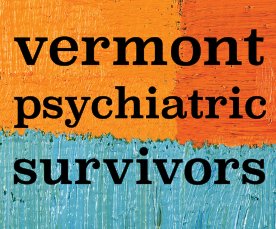Report by Anne Donahue
State and federal regulators on hospital safety have defended the level of requirements for suicide prevention and say hospitals are the ones that still have responsibility – and enough leeway – to assure that patient emotional and therapeutic needs are met.
Regulators were contacted as follow-up to an article in the winter Counterpoint that quoted patients as saying that inpatient psychiatric units have become less welcoming and less healing in recent years as hospitals put an ever-increasing priority on making them physically safe from suicide attempts.
Activity areas have been closed off, patients are less able to take care of needs on their own, and the furnishings have become more sterile, they told Counterpoint.
Hospital leadership said new changes continue to be required by the Joint Commission, a private organization that accredits hospitals at a high cost and sometimes to the detriment of a therapeutic environment.
In written responses that they agreed to provide to Counterpoint, the Commission said that “hospitalization is intended to provide patients a safe, protected environment designed to heal and stabilize during periods of crisis when they are most vulnerable,” and given data that shows that hanging is the most frequent cause of inpatient suicide, standards “are appropriately focused on mitigating risks associated with hanging.”
The responses noted that the Joint Commission “requires organizations to treat individuals receiving care in a dignified and respectful manner” but that it does not define what creates a therapeutic environment, “as this is up to each organization based on their setting.”
“Accredited organizations have options when it comes to developing environments that are both safe and conducive to healing [and] are responsible for developing policies and procedures to promote individual autonomy and maintain a safe environment,” it said.
When a hospital is accredited by the Joint Commission, it is automatically deemed to be in compliance with the Centers for Medicare and Medicaid, according to Suzanne Leavitt, RN, who directs Vermont’s Licensing and Protection Division, which is the local arm for federal enforcement. CMS compliance is a requirement for federal funding.
She agreed that there is a difficult balance between protecting patient safety while also meeting the CMS definition, which includes emotional safety. Her agency does try to weigh “the personal dignity versus the hospital’s ability to keep people safe,” she said.
Leavitt said the difference in recent years is not new standards, but availability of new products that better meet safety goals.
“What strikes me” from the discussion, she said, is how it “is easier to change the environment” than make changes in other ways, such as staffing or policies – but it’s “not the CMS role” to direct hospitals on how they should meet the requirements.
Former patients have shared the distressing impact of physical safety measures. Of the 16 responding to a Counterpoint poll, 11 (68%) said that safety features to prevent self-harm made psych units feel less healing. One person commented on the online Counterpoint article, saying that, “So many things that allowed for a therapeutic and healing environment have been stripped away due to the changes,” so that the hospital experience “feels more like incarceration or punishment rather than a place to heal.”
“The pendulum needs to swing away from the extreme and find a balance… in the name of patient rights, dignity and healing,” the comment said. “What we have done to people who need this level of care is a shame. It needs to be rectified.”
Leavitt said she agreed with the suggestion that there was a potential that creating highly sterile inpatient environments might increase the risk to patients after they leave the hospital. “[We] don’t want to infantilize folks so they don’t feel prepared” after discharge, she noted.
“I would love to see that explored by the researchers in psychiatry,” Leavitt said, because regulators have to follow what research shows to “help us with the best practices.”
A report of the Joint Commission’s expert panel that developed its newest standards observed in 2017 that, “Most experts think that far more suicides occur shortly after hospital discharge, although conclusive national data are not available.” When asked by Counterpoint about any pending new research, the Joint Commission said it was “not aware of any data or studies that explore specific characteristics of the inpatient hospital environment and an association with post-discharge suicide rates or psychiatric readmission rates.”

